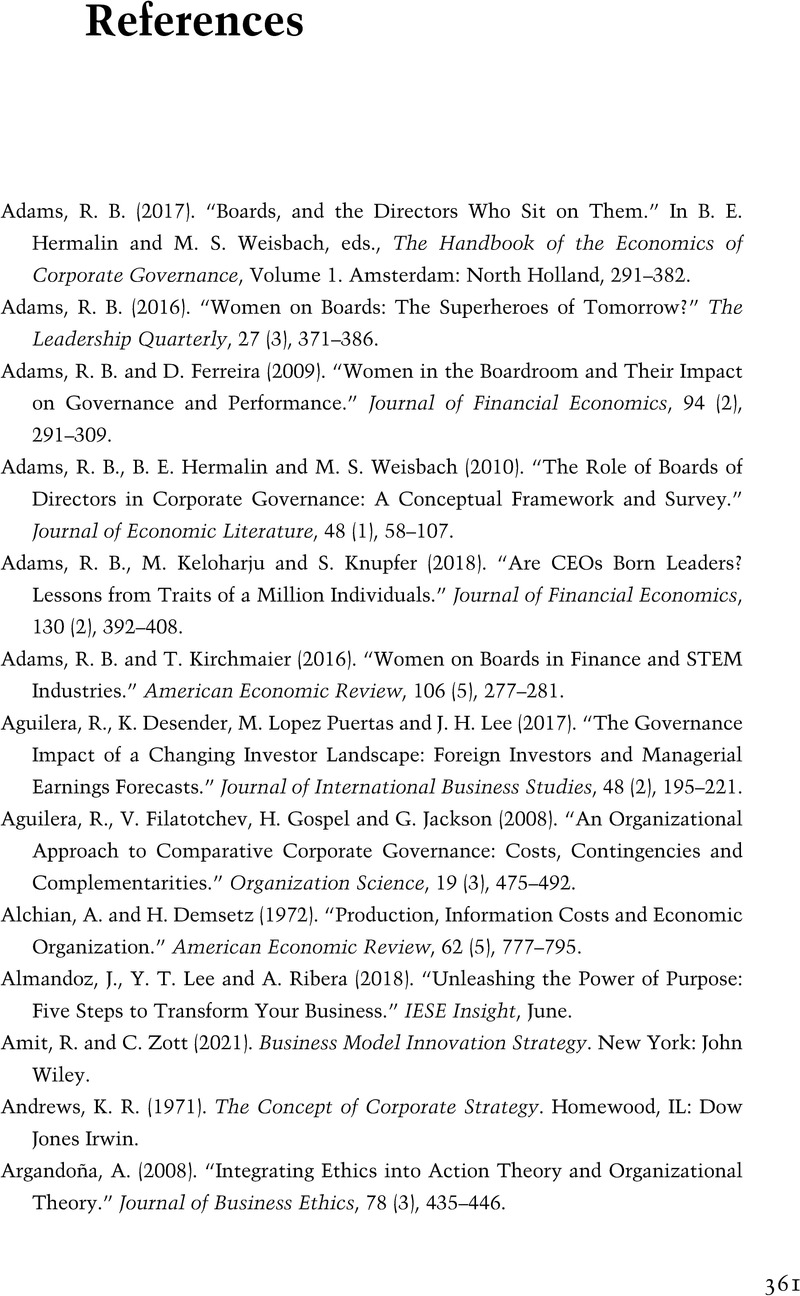Book contents
- Boards of Directors in Disruptive Times
- Reviews
- Boards of Directors in Disruptive Times
- Copyright page
- Contents
- Figures
- Tables
- Acknowledgments
- Introduction
- 1 The Changing Nature and Functions of Boards of Directors
- 2 Boards of Directors and Purpose
- 3 Boards of Directors in Corporate Strategy
- 4 The Role of the Board of Directors in Corporate Transformation
- 5 The Board in CEO and Senior Management Selection, Development and Succession
- 6 From Board Structure to Boards as Effective Teams
- 7 From Compliance to an Engaging Corporate Culture
- 8 Engaging Shareholders and Key Stakeholders
- 9 Assessing the Firm’s Overall Impact
- 10 Effective Boards of Directors for Better Corporate Governance
- References
- Index
- References
References
Published online by Cambridge University Press: 16 November 2022
- Boards of Directors in Disruptive Times
- Reviews
- Boards of Directors in Disruptive Times
- Copyright page
- Contents
- Figures
- Tables
- Acknowledgments
- Introduction
- 1 The Changing Nature and Functions of Boards of Directors
- 2 Boards of Directors and Purpose
- 3 Boards of Directors in Corporate Strategy
- 4 The Role of the Board of Directors in Corporate Transformation
- 5 The Board in CEO and Senior Management Selection, Development and Succession
- 6 From Board Structure to Boards as Effective Teams
- 7 From Compliance to an Engaging Corporate Culture
- 8 Engaging Shareholders and Key Stakeholders
- 9 Assessing the Firm’s Overall Impact
- 10 Effective Boards of Directors for Better Corporate Governance
- References
- Index
- References
Summary

- Type
- Chapter
- Information
- Boards of Directors in Disruptive TimesImproving Corporate Governance Effectiveness, pp. 361 - 380Publisher: Cambridge University PressPrint publication year: 2022

